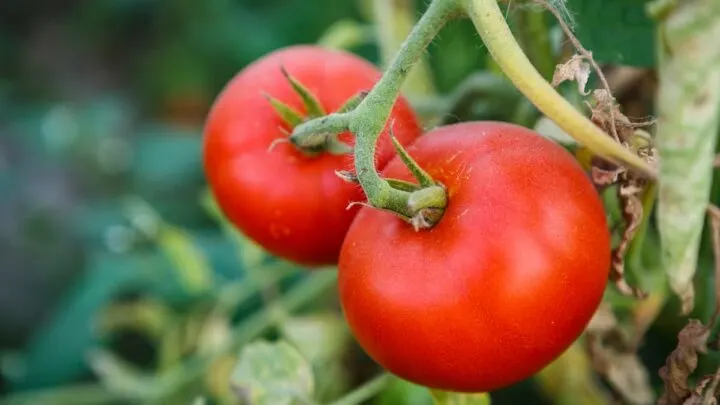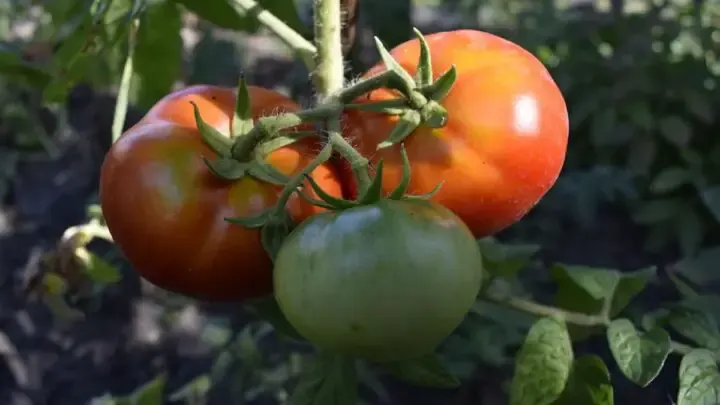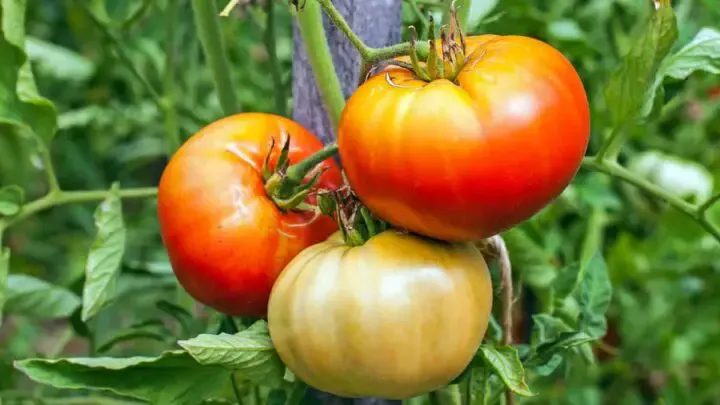Tomato plants are a wonderful vegetable for us, but plenty of insects are also ready to turn tomato leaves into their next meal.
One of the most troublesome insects for tomato growers is the small whitefly, which attracts tomatoes and a few other plants as a good food source.
Not only do the whiteflies steal your tomato plant’s nutrients, but they can also stop your tomato from fruiting and leave it vulnerable to fungal infections and other problems.
Here’s what you need to know about tomatoes attracting whiteflies, the other flies you see around your tomatoes, why flies seem to prefer tomato plants, and what you can do to eliminate them.

Why Are There Flies All Over My Tomato Plants?
There are many reasons you might have flies crop up around your tomato plants, from contaminated soil to the simple fact that tomato plants and other vegetables can be good food sources for certain kinds of flies.
Tomato plants are generally good food sources for insects that eat leaves and vegetables, making them good targets for flies, aphids, and other pest insects. Additionally, pest insects can often attract the carnivorous kinds of insects that eat those pests.
However, if flies are all over your tomato plants, that’s probably more than just some flies sticking around because they found a food source. Likely they’re breeding nearby, either thanks to contaminated soil or fertilizer or because your garden is a good enough habitat for them to start breeding there on their own.
Tomato plants do have some natural defenses against insects like flies and aphids. Still, many insects have defenses that make it possible to continue feeding on tomato plants.
Worse, when tomato plants are infested with certain insects, especially whiteflies, that can interfere in their development and stop them from producing vegetables.
Here’s what you need to know about the kinds of flies tomatoes attract and which ones are most harmful to your plants.
What Kind Of Flies Do Tomato Plants Attract?
Don’t worry; tomato plants won’t actively attract horseflies and other large biting flies. Those insects might be around, but it won’t be because of your tomatoes.
Instead, tomato plants and other garden vegetables tend to attract smaller herbivore flies that feed directly on the plants and other plants in the area.
These pests can still be irritating, and all of them can interfere with your harvest even if they don’t bite you directly.
Here are the three most common types of flies tomato plants attract.

Whiteflies
Whiteflies are probably the most troublesome of the three flies tomato plants attract. These small white insects look like gnats or fruit flies and are similarly small. The easiest way to identify them is that they generally have longer, more prominent wings, and their wings are more of a solid white instead of transparent.
Whiteflies also breed incredibly quickly, so even a handful of whiteflies can quickly create an infestation in your garden.
The biggest problem with whiteflies is that they have a specialized chemical they can inject into the plants while feeding. The chemical encourages the plants to keep growing their stems and leaves but prevents flowering or fruiting.
That means that a whitefly infestation can lead to healthy-looking plants that don’t ever produce fruits. Taking care of these flies is a lot easier when you identify them quickly, so if you suspect that you might be dealing with whiteflies, it’s a good idea to take immediate action.
Gnats
Gnats are another common pest found around tomato plants, and they’re generally more irritating to you than anything. However, in some cases, gnats may carry fungus spores and other pathogens that can damage your plants, especially if you live somewhere blight and wilt diseases are common.
Gnats typically move in groups and form small clouds in the air when it’s cool and slightly humid – which is usually when gardeners notice that they have them.
Unfortunately, some gnats are small enough that insect netting is less effective against them. Still, you can use insecticidal soap or naturally pest-repelling companion plants to make an infestation less likely.

Fruit Flies
Fruit flies are some of the most common flies you’ll find around tomato plants, especially around harvest time.
These flies will typically congregate near flowers and fruits, including immature fruits, and will feed off both fruits and the leaves and stems of the tomato plants.
Like the other flies on this list, they don’t cause chewing damage like caterpillars or some slugs and snails, but they can deplete your tomato plant’s resources without causing obvious damage.
Fruit flies can cause tomatoes to wilt on the vine prematurely, which means that, like the other flies on this list, these pests can interfere with your harvest.
Like the other flies on this list, insecticidal soap is an effective control option. Additionally, fruit flies can be easier to trap than the other two common flies around tomatoes.
Do Flies Harm Tomato Plants?
Yes, the kinds of flies hanging out on and around tomato plants generally cause some damage, though not always the way you would think.
For instance, whiteflies depend on the plants they feed on being in relatively good health, so they don’t generally kill the plants. However, they do change the way the tomato plants grow, which prevents them from creating fruit to pass along their genes – or creating tomatoes for you to harvest.
The biggest threat from gnats is similarly a secondary threat. The insects cause a small amount of damage and can cause a lot of stress when infesting your tomato plants, but the biggest issue isn’t that they are feeding on the plants. Instead, gnats are dangerous because they can be vectors for various plant diseases that harm your tomatoes.

How Do You Get Rid Of Flies On Tomato Plants?
There are a few ways you can get rid of flies on tomato plants. The effectiveness of each method depends in part on how established the tomato plants are, how long they’ve been infested, and which insect is responsible for the infestation.
For most tomato flies, you’ll need multiple methods and regular treatments for at least a couple of weeks to get an active infestation under control.
Hose Off Your Plants
One of the first and easiest things you can do to deal with a fly problem is to hose off the plants.
The water will knock off adult flies, may dislodge eggs, and make it harder for the flies to land on the plants until the water dries.
This is a temporary measure and generally won’t reduce fly populations much, if at all, but it will help reduce the damage they cause while you prepare other solutions.
Spray Infestations With Insecticidal Soap
Insecticidal soap is much gentler and safer to use than other pesticides, and you can even make it at home with a little dish soap, water, oil, and a spray bottle.
The trick with insecticidal soap is that it doesn’t have ongoing effectiveness. Insecticidal soap will only kill the insects that are coated in it. The soap works by cutting off their oxygen supply, which will quickly suffocate most insects.
If you’re using insecticidal soap, make sure you’re carefully inspecting both sides of your tomato plants’ leaves; insects hanging out on the bottom of the leaves will quickly repopulate and replace the ones you kill if you don’t get them all.
Insecticidal soap is safe to use 2-3 times a week.
Use A Pesticide
Another option is to get a conventional pesticide spray from your local garden center or hardware and home improvement store.
The one caveat is that you shouldn’t use a long-lasting pesticide because those chemicals are more likely to harm your native bee population and may also kill insects that normally eat the pest flies you’re trying to get rid of.
Apply any pesticide according to the directions on the container. Every chemical is a little different, so we’ll defer to the manufacturers to know how each variety should be used.
Add Fly Traps To Your Garden Area
Another option that can be used both to manage an existing infestation and to help prevent future infestations is to add small fly traps to your garden area. 2-3 traps are sufficient for most gardens.
You may want to try several different types of traps because different traps will work better for different species of flies.
Baited traps with honey, vinegar, or store-bought fly bait generally work better than traps without bait.

Hi there, my name is Allie and welcome to my blog; GareningWithAllie!
Much of what you see written here is just our personal experiences with gardening. Along with the content I write here, there is also a unique collection of gardening topics covered by some of our close friends. I hope you find everything you read here to be helpful, informative, and something that can make your gardening journey the most lovely experience ever! With that said, Happy Gardening!
